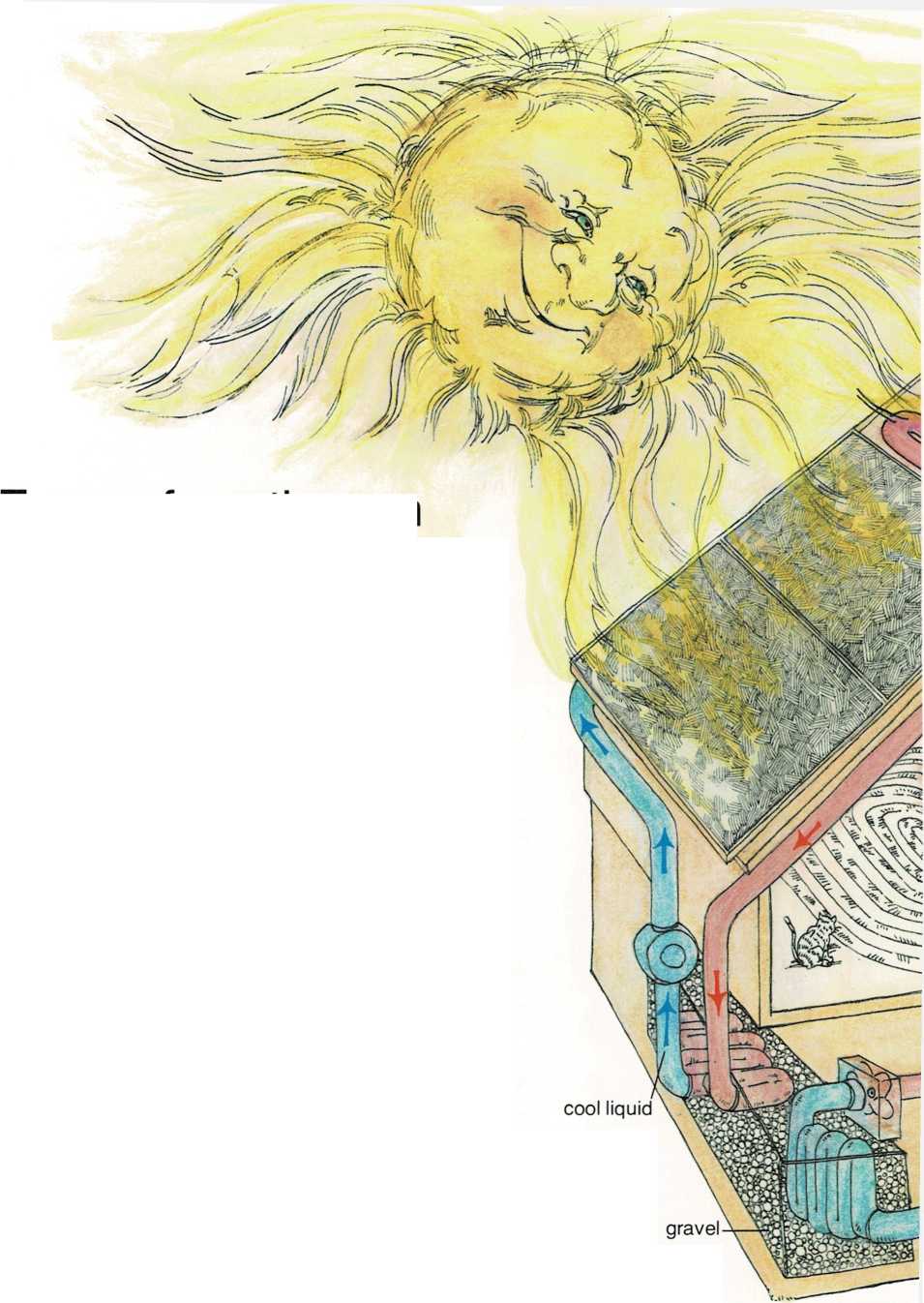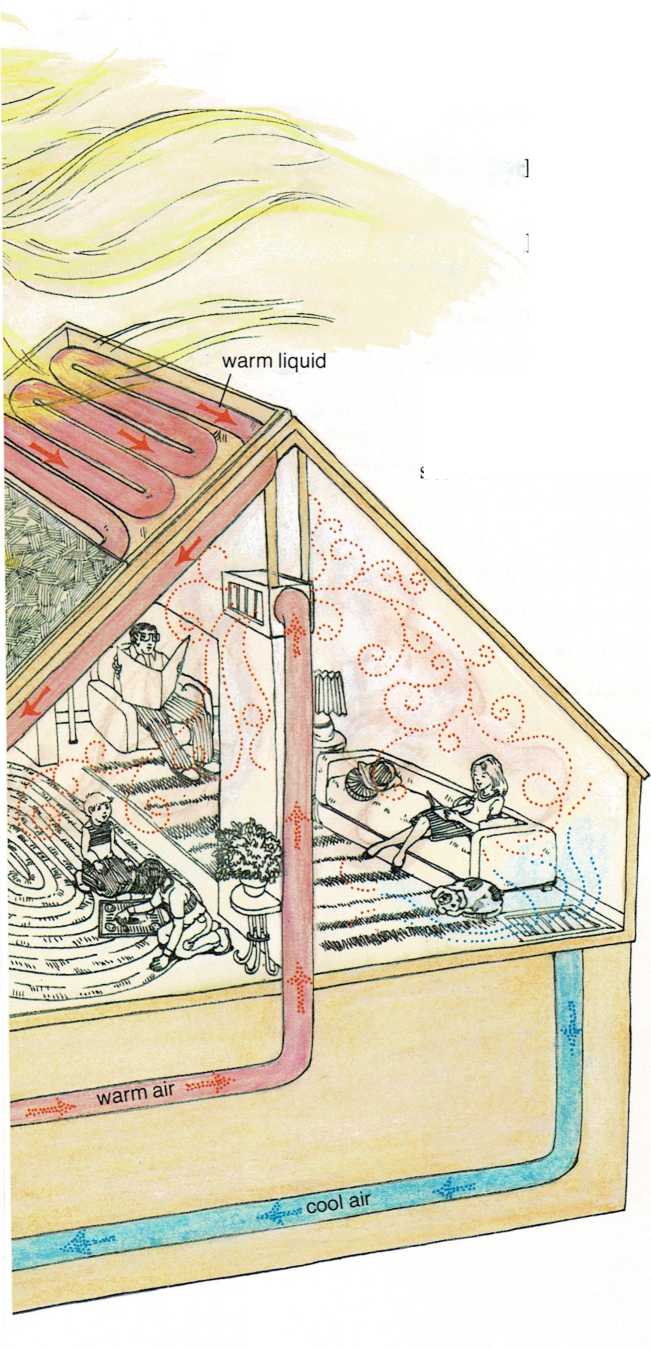
Energy from the sun
Someday you may live in a house that keeps itself warm with a tankful of
\”sunshine”— even on cloudy days and chilly nights. Instead of turning
on a furnace, you’ll use saved-up heat from the sun.
The heat for such a house comes from solar energy. Sol is the Latin
word for \”sun.” So solar (SOH luhr) energy is energy from the sun. And
a house that uses the sun’s energy is a solar house—a \”sunshine
house.”
A solar house has special collectors to capture the sun’s heat. Usually
the collectors are built on the roof or on the sunniest side of the
house.
How is the sun’s heat stored? In one kind of solar house, water or
another liquid is pumped through the collectors on sunny days to pick up
heat. Next, the hot water is piped to a huge tank of sand or gravel. Bit
by bit, it heats the whole tank. Sand or gravel can hold heat longer
than water does, so heat
stays in the tank long after the sun goes down.

When the house is chilly, all you do is press a button that turns on a
fan by the tank. The fan pulls the cool air into the hot tank. When the
air gets warm, it is blown out of the tank and through the house. So the
house gets warm, and you do, too—with a tankful of stored-up heat from
the sun.
This house is heated by the sun. The arrows show how a liquid warmed by
the sun heats the gravel in the tank and how hot air then moves through
the house.

